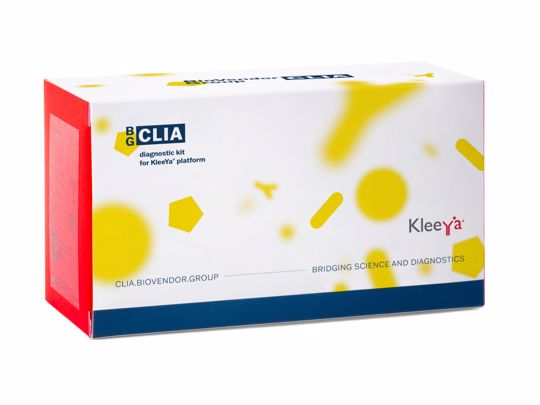CLIA VZV IgM
The chemiluminescence assay is intended for the diagnosis, monitoring and screening of VZV infection using IgM antibodies in human serum or plasma in the general population.
The chemiluminescence assay is intended for the diagnosis, monitoring and screening of VZV infection using IgM antibodies in human serum or plasma in the general population.
| Catalog Number: | CL-VZVM100 |
|---|---|
| Size: | 100 tests |
| Regulatory status: | CE IVD |
| Clinical topic: | Infectious Diseases |
| Diagnostic panel: |
Childhood Diseases Herpes Viruses Vaccination Monitoring |

Varicella zoster virus (VZV, HHV-3) belongs to the Herpetoviridae family. The virus causes chickenpox, varicella (primary infection) and shingles, herpes zoster (reactivation). Primary VZV infection occurs mainly in childhood, and it is transmitted by means of droplet infection. Up to 90% of humans without specific antibodies can be infected during close contact with an infected person. The symptoms include fever, malaise and skin itching preceding the development of characteristic exanthema. The disease usually terminates without any lasting effects. Primary infection in adolescents and adults can be generally more severe with serious complications (e.g. encephalitis, pneumonia and hepatitis) especially in immunocompromised patients. The virus can be transmitted via placenta to the foetus; this can lead to severe congenital defects. Maternal infection of seronegative female (i.e. without specific antibodies) in late gestation presents serious risk for a newborn.
As a member of the Herpetoviridae family, the virus may persist latently in the organism and can be reactivated subsequently (reduced immunity) producing a disease known as shingles.
Diagnosis of the disease is based on clinical manifestation, epidemiological anamnesis and laboratory tests. The most widely used approach in serological diagnostics of VZV infection is the detection of specific IgA, IgM, and IgG antibodies. Specific IgG antibodies have anamnestic character and serve for patient immunological status assignment.
Antibodies of IgM and IgA class are a sign of an active infection (primary infection and reactivation) and disappear during convalescence. In some cases, they can persist for several months.
Specific IgG antibodies mostly remain in reduced levels throughout the entire life of the infected person.
| Assay stability | 30 days on board stability / In use stability until the expiration date at storage temperature 2-8 °C |
| Sample matrix | Serum, Plasma |
| Measuring range | 1–160 U/ml |
| Assay/kit content | Reagent Cartridge with specific reagents for the assay, magnetic particles, calibrators |
| Complementary products | Anchor® Tips, Stackable Cuvette, KleeYa Trigger Pack, KleeYa Wash buffer |
| Note | The kits are CE-IVD certified and intended for professional use. |